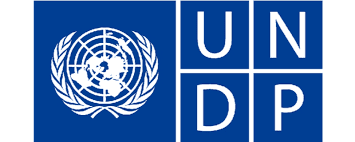
Audio By Carbonatix
A recent survey by the United Nations Development Program (UNDP), indicates that 24.6% of Ghanaians are multi-dimensionally poor representing 8 million and 89,000 of the country’s population as at 2021.
Another 20.1% of Ghanaians representing 6 million and 598,000 people are classified as vulnerable to multidimensional poverty.
This Multidimensional Poverty Index (MPI) data is an increase based on the previous one in Ghana; a situation the UNDP is unhappy about.
UNDP's Resident Representative, Dr. Angela Lusigi, noted that it is difficult to see the real poverty picture post-COVID.
According to her, the available data shows Ghana was making progress towards poverty reduction and calls for recovery efforts to be accelerated to ensure no one is left behind.
The UNDP Administrator, Achim Steiner said the report has been put together by the institution to urge countries around the world to help pull resources together and lift many out of poverty.
“This is a call to action for countries to conduct frequent and up to date household surveys to measure poverty and eliminate abject poverty.”
“This recent data is vital for planning and designing policies and incentivizing change.”
“UNDP stands ready to assist and support countries to use this innovative digital tools and data to power new efforts to help people rise out of poverty and most importantly stay out of poverty,” she said.
According to Joy FM’s Foreign Affairs Correspondent, Blessed Sogah, the situation is not just a Ghanaian problem, but present within Sub-Saharan Africa.
What is multidimensional poverty?
Poverty is often defined by one-dimensional measures – usually based on income. But no single indicator can capture the multiple dimensions of poverty.
Multidimensional poverty encompasses the various deprivations experienced by poor people in their daily lives – such as poor health, lack of education, inadequate living standards, disempowerment, poor quality of work, the threat of violence, and living in areas that are environmentally hazardous, among others.
A multidimensional measure of poverty can incorporate a range of indicators that capture the complexity of this phenomena in order to inform policies aimed at reducing poverty and deprivation in a country. Depending on the context of a country and the purpose of the measure, different indicators can be chosen to reflect the needs and priorities of a nation, as well as its constituent regions, districts, provinces, etc.
Latest Stories
-
Emissions Levy had no impact on air pollution, research reveals
38 minutes -
DSTV enhanced packages stay in force as subscriptions rise following price adjustments
43 minutes -
Financial Stability Advisory Council holds final meeting for 2025
1 hour -
Education in Review: 2025 marks turning point as Mahama resets Ghana’s education sector
1 hour -
Nigeria AG orders fresh probe into alleged intimidation and assault of Sam Jonah’s River Park estate staff
1 hour -
Concerned Small Scale Miners commend GoldBod’s efforts in addressing gold smuggling
1 hour -
Haruna Mohammed claims Ghana Audit Service undermined
2 hours -
5 members of notorious robbery syndicate in Tema, Accra arrested
2 hours -
BoG, SEC and FIC hold Joint sensitisation workshop for Virtual Asset Service Providers
2 hours -
How Nico Cantor became one of the top voices in American soccer
2 hours -
Ghana colorectal cancer patients face low survival rates, KNUST study finds
3 hours -
Police arrest suspect in GH₵ 7.5m daylight robbery at Adabraka
3 hours -
Armwrestling: The Golden Arms’ 2025 Triumph and an Era of Unprecedented Victories
3 hours -
Ghanaian researcher wins ASCE editors’ recognition for modular construction study
3 hours -
Corruption fight: I don’t think there’s political persecution or witch-hunting – Edem Senanu
3 hours

